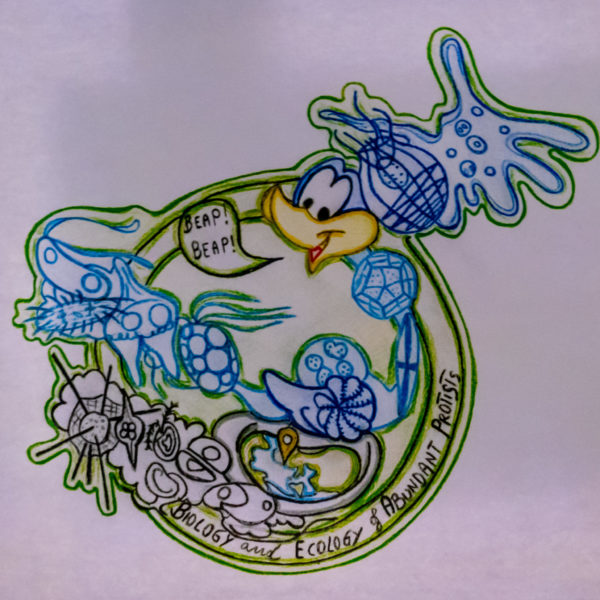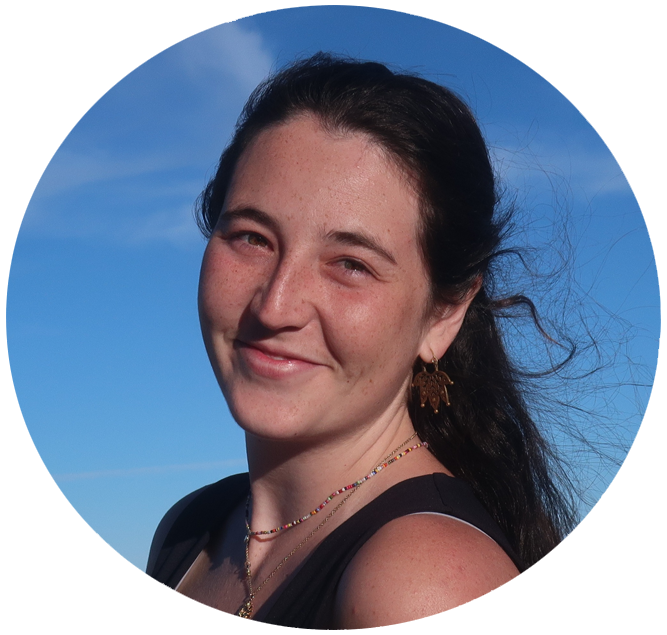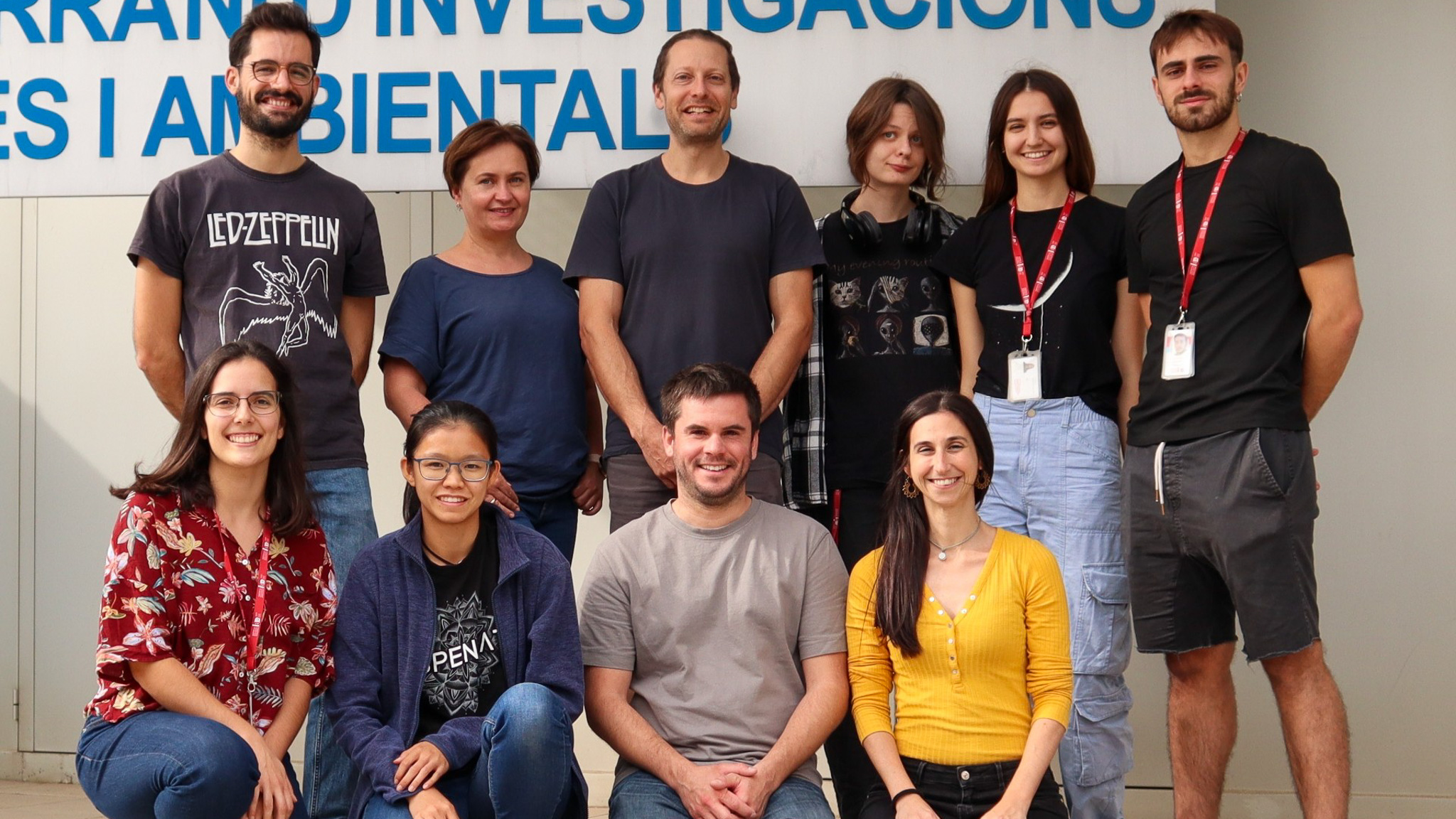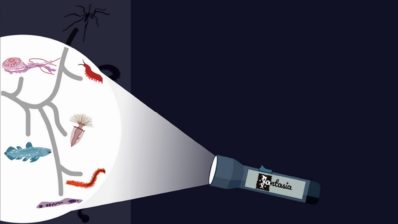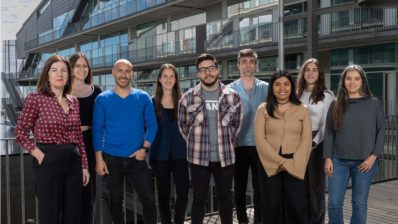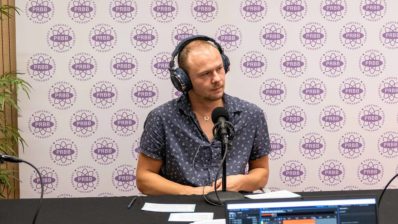Daniel Richter first learned about evolution at the age of thirteen, and he was captivated. So much so that, even though he wasn’t sure he wanted to become a scientist, he pursued degrees in Biology and Programming in the United States. He worked as a programmer at an institution focused on evolutionary biology and eventually decided to pursue a PhD. His thesis explored the early stages of animal evolution—a period with no fossil record. Thus, it was necessary to compare living organisms like animals with their closest living relatives: choanoflagellates, one of the many groups of protists.
Now, he is the Principal Investigator of the Laboratory of Biology and Ecology of Abundant Protists (BEAP Lab) at the Institute of Evolutionary Biology (IBE: CSIC-UPF). This research group, just three years old, comprises researchers with diverse expertise, from bioinformatics to cell biology, and hails from various countries: the United States, Italy, Spain, Ukraine, Portugal, Greece, and France.
A black box in the sea
Protists are the least known group within eukaryotes, which also include animals, fungi, and plants. These unicellular and colonial organisms are highly abundant in the ocean, where 95% of species remain unidentified.
The goal of Richter’s group is to isolate and culture new species among the 500 most abundant protists in the sea, to understand how they evolved and how they interact with each other and the environment. They work with a DNA database of organisms from water samples, though the identity of each organism remains unknown. To tackle this, they identify the DNA of each protist by cultivating water samples. As protists are abundant, they dilute the water and grow the organisms present, identifying them afterward through microscopy.
“Our research is like a marriage between the evolution and ecology of unknown organisms.”
To uncover the ecological role of each species, they sequence the genome and transcriptome—the set of genes expressed at a given moment. Using bioinformatics methods, they analyze gene expression patterns to find interactions and responses to environmental changes. On the evolutionary side, computation is equally essential: they study gene families, protein domains, and biological processes to reconstruct evolutionary history.
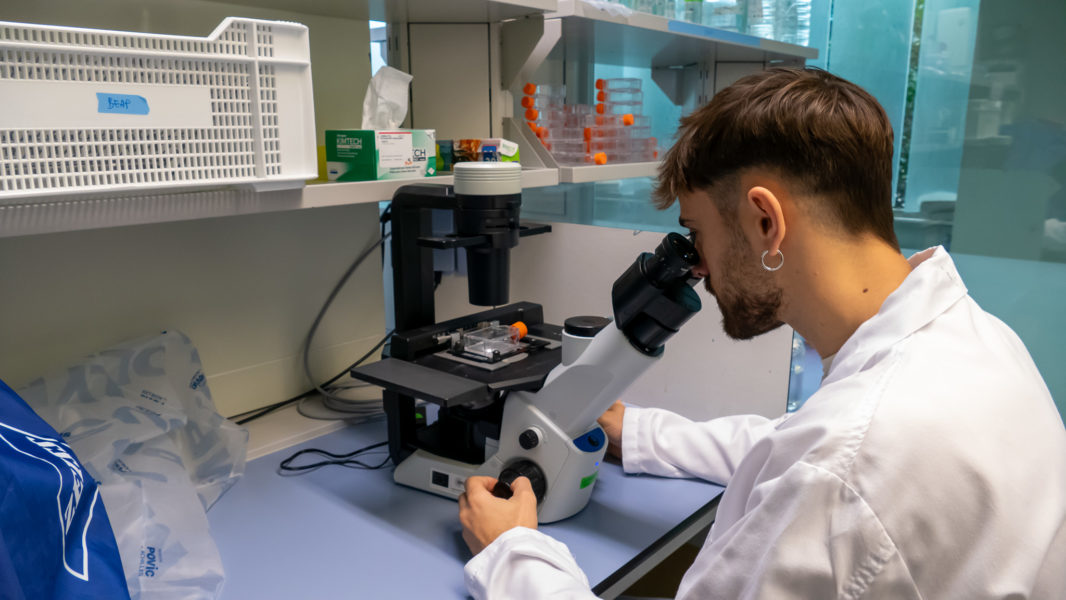
The ocean in reverse
The samples they work with are typically water collected by other research groups during marine expeditions. Thanks to their collaboration with the Institute of Marine Sciences (ICM), they can access samples from diverse regions, ranging from Antarctica to nearby locations like Blanes. However, their latest expedition was planned in a unique way: using reverse simulations. They needed water from the open ocean, but the cost of a day on an oceanographic ship ranges between 10,000 and 50,000 euros. Thus, they decided to conduct their expedition on an island that receives currents from those central areas. Using models that trace particles backward to their origin, they found that Grenada, in the Caribbean, is where most particles from the mid-Atlantic converge. The water there is quite special, coming from a nutrient-poor ecosystem unlike the coastal Mediterranean.
In Grenada, they collected numerous protist samples, but interestingly, the most abundant species turned out to originate from the Mediterranean. This species is widely distributed because “the most abundant organisms are everywhere; they’re ubiquitous.” Surprisingly, it may be a potential new species from the dinoflagellate group, isolated by the Coastal Biological Processes Group at the ICM.
Another curious aspect is where they cultivate some of the protists in their lab: very unconventional refrigerators. “One day, while having breakfast, I noticed a pastry fridge. They’re transparent, illuminated, and allow temperature regulation.” This inspired Daniel to acquire new fridges for the lab: pastry refrigerators that maintain the samples with natural light and are far more cost-effective.
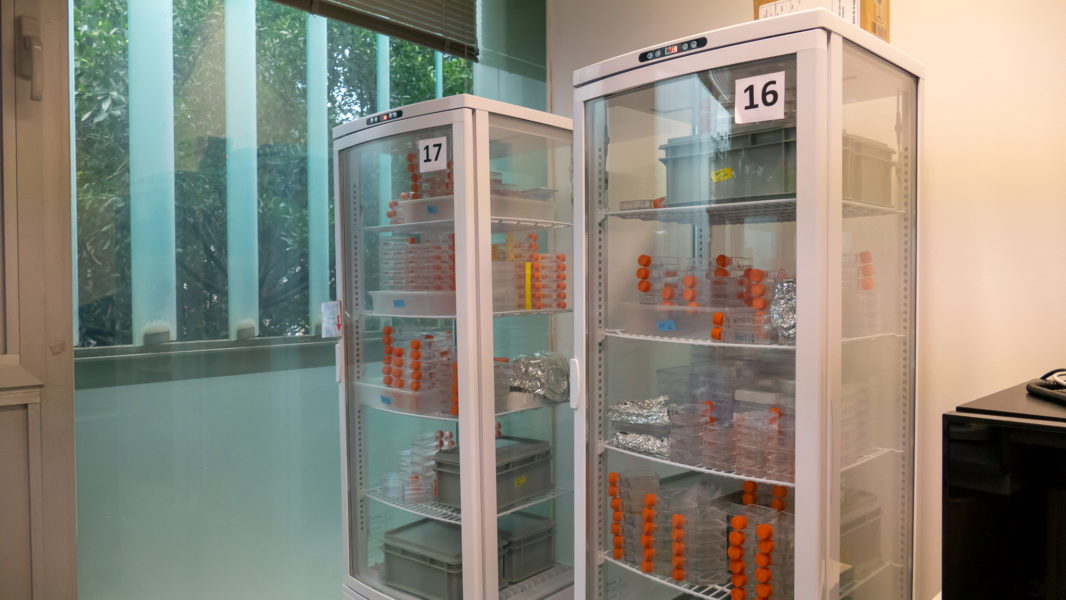
A unique research philosophy
One of the BEAP Lab’s goals is to ensure that their work is valuable to the community while also driving cultural change in research. For this reason, they make their resources— sample cultures, codes, protocols, and generated data—available to everyone. This open science approach also benefits them: “If you already know that what you’re doing will be shared with the community, you do it better from the outset, which means it’s better for others but also for yourself.” Members of the scientific community worldwide—Japan, the United States, France, Italy, England—have appreciated and used their data. As a result, they plan to continue contributing to make their work accessible to all, because “everything we generate is ultimately thanks to public funding.”
Open science: “If you already know that what you’re doing will be shared with the community, you do it better from the outset”
Daniel Richter (IBE)
In addition to managing all the research and administrative tasks in the lab, Daniel is a member of the IBE Diversity Committee. One of their recent actions was drafting their own diversity plan. As a research institute jointly coordinated by two institutions (UPF and CSIC), it was necessary to unify protocols. “Sometimes what we do involves very small changes, but it’s important to keep driving these changes.” Collaboration is key, and Daniel also represents IBE on the PRBB’s EDI Committee.
To conclude, with a smile, Daniel shares the lab’s philosophy: “It’s a bit of a crazy idea, one very simple too: we try to do the best for everyone daily.” Although he sometimes lacks time to respond to all the emails he receives, because “when you become a principal investigator, you’ve had 20 years of training to be a scientist and 0 years for administrative tasks,” he finds comfort in knowing that, despite the challenges, the BEAP Lab contributes a little every day to making the world a better place.
